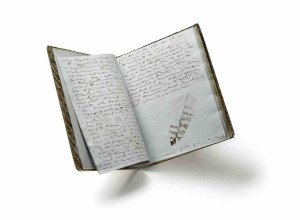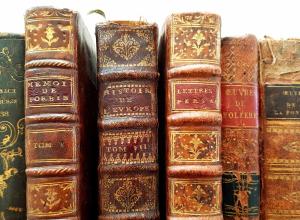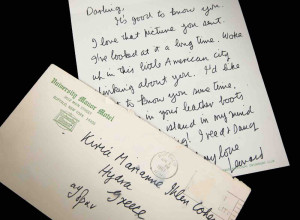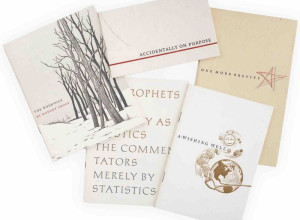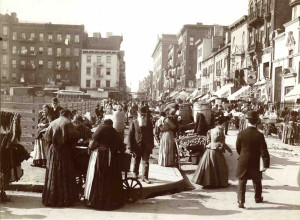The Morgan Library Adds Exceptional Group of Works to its Collections
 New York, NY, August 18, 2016—The Morgan Library & Museum announced today the addition of a number of important objects to its renowned collections. The works highlight a particularly robust period of acquisitions by the museum and range from a rare fifteenth-century illumination from the choir book of King Louis XII to a drawing by Renoir, a book by Saint-Exupéry, a group of unpublished Henry James letters, one of the first photographs of Mayan architecture, and a 2015 watercolor by Stanley Whitney.
New York, NY, August 18, 2016—The Morgan Library & Museum announced today the addition of a number of important objects to its renowned collections. The works highlight a particularly robust period of acquisitions by the museum and range from a rare fifteenth-century illumination from the choir book of King Louis XII to a drawing by Renoir, a book by Saint-Exupéry, a group of unpublished Henry James letters, one of the first photographs of Mayan architecture, and a 2015 watercolor by Stanley Whitney.
“The Morgan is delighted to have added so many out standing works to its collections over the last several months,” said Colin B. Bailey, the museum’s director. “The institution is noted for the encyclopedic nature of its holdings and these acquisitions reinforce this fact. We are indebted to the curators, donors, and advisors who helped bring these works to the Morgan and continue the vital process of building our collections.”
Highlights by Department
Drawings
Piero di Cosimo, 1462-1522, Italian, Seated Girl, ca. 1495-1505. Purchased on the Seligman Fund, with the special assistance of Margot Gordon, 2016.
Piero di Cosimo is one of the most distinctive and individual personalities of the Florentine Renaissance, an artist whose immediately recognizable works have been described as “neither real nor quite imagined,” something that could be said of Seated Girl. Fewer than thirty drawings by the artist survive and the Seated Girl, recently included in the Piero exhibition at the Uffizi Gallery in 2015, was the last known example in private hands.
Pierre Auguste Renoir, 1841-1919, French, Half-length Study of a Woman seen from the Back, her Face in Profile, 1883. Purchased on the Charles Ryskamp Fund, the E.J. Rousuck Fund, and as the gift of Diane A. Nixon, 2016.
The first important figure study by Renoir to enter the Morgan collection, this exquisite drawing is a preliminary study for one of Renoir’s most well-known paintings, Danse à la Ville, executed in 1883 with its pair, Danse à la Campagne, both now in the Musée d’Orsay. The work exemplifies a change in Renoir’s technique in the early 1880s as he turned to the medium of drawing to add a subtlety, expressiveness, and precision to his art. Renoir attributed this change to having seen the work of Raphael during an 1881 trip to Italy, but the drawing also clearly displays evidence of Renoir’s profound study of Ingres at this time. Indeed, the 1880s have been referred to as Renoir’s “Ingres period.”
Modern and Contemporary Drawings
Cecily Brown, b. 1969, British, Paradise (Fighting Lions), 2015. Gift of the Modern and Contemporary Collectors Committee, 2016.
This drawing by Cecily Brown was partly inspired by a 1613 watercolor by Flemish artist Jacob Hoefnagel in the Morgan’s collection. Brown’s work, which is characterized by a luscious and energetic paint handling, incorporates a range of sources, from Old Masters to pornographic imagery. Although her drawings are lesser known (she tends to keep them in the privacy of the studio), they are an essential part of her practice and display the same tension between figuration and abstraction as her paintings.
Anne Truitt, 1921-2004, American, Truitt’66[1], 1966. Gift of the Modern and Contemporary Collectors Committee, 2016.
This is one of a group of drawings that minimalist artist Anne Truitt produced while living in Japan between 1964 and 1967. Truitt is best known for her painted wooden sculptures in the form of rectangular columns, which she began making in 1962. While in Japan, she explored a different format, creating horizontal sculptures with folds and related drawings that were inspired by origami and Asian folding screens. Because she eventually destroyed all the sculptures she made in Japan, drawings like this one are all the more significant.
Stanley Whitney, b. 1946, American, Untitled, 2015. Gift of the Modern and Contemporary Collectors Committee, 2016.
This work is characteristic of Stanley Whitney’s mature style of stacking rectangles of color in irregular grids. Whitney, who was the subject of a solo exhibition last year at The Studio Museum in Harlem, chose early on to embrace abstraction, despite pressure he has said he felt, as an African-American, to use figuration to evoke the racial experience. The grid format, which he adopted in the early 1990s, allowed him to focus on color relationships to convey emotion and feeling. In watercolors such as this one, he applied the paint more loosely than in his larger oil paintings, allowing a sense of rhythm and improvisation, derived from his love of jazz, to activate the surface.
Medieval and Renaissance Manuscripts
Levitation of Mary Magdalene, miniature from the choir book of King Louis XII and Queen Anne de Bretagne, France, Paris, ca. 1498. Purchased on a grant provided by the Bernard H. Breslauer Foundation and with contributions from the Visiting Committee to the Department of Medieval and Renaissance Manuscripts, 2016.
Probably for use in the Sainte-Chapelle in Paris, the choir book was produced in Paris around 1498, just after Louis became king of France. Cut up in the nineteenth century, the manuscript exists only in fragments and border bits. This is the only surviving entire leaf with a miniature, which was painted by Jean Coene, an illuminator who worked for the royal court. Colloquially known as a “Hairy Mary,” the Magdalene floats in the sky clothed only in the long tresses of her hair. The French royals in the Renaissance were particularly devoted to Mary Magdalene, visiting her relics and her grotto in Provence (pilgrimage sites to this day).
The Annunciation as an Allegorical Unicorn Hunt, miniature, Germany, Eichstätt, ca. 1500. Purchased on a grant provided by the Bernard H. Breslauer Foundation and with contributions from the Visiting Committee to the Department of Medieval and Renaissance Manuscripts, 2016.
A rare example of Nonnenarbeit (nuns’ work -- art made by untrained nuns), this charming miniature fuses the biblical narrative of the Annunciation with the allegory of the unicorn hunt. The Virgin Mary sits in an enclosed garden while outside the Archangel Gabriel, sounding a horn, leads four hounds on the hunt for the mythic unicorn, which rests on Mary’s lap. Intended as a visual aid, this devotional image clearly labels all the Marian symbols that make up the composition. Such didactic labeling is characteristic of devotional art produced by and for cloistered nuns in late-medieval Germany. Such miniatures seldom appear on the market, and this is the first example to enter the Morgan’s collections.
Printed Books
Antoine de Saint-Exupéry, 1900-1944, Wind, Sand and Stars, translated by Lewis Galantière, illustrated by John O’Hara Cosgrave II. New York: Reynald & Hitchcock, 1941? Purchased on the Caroline Macomber Fund, 2016.
First published in 1939, Wind, Sand and Stars is an autobiographical essay about the romance of flight. This copy contains a presentation inscription by Saint-Exupéry and an ink-and-pencil self-caricature as the Little Prince in his characteristic pose straddling the globe amidst the stars and planets. In the inscription the author refers to himself as a pilot—thus linking two of his most important publications and acknowledging (modestly) his fame as an author and aviator. This volume complements an extensive collection of work by Saint-Exupéry at the Morgan, including the author’s working manuscript and drawings for The Little Prince.
Literary and Historical Manuscripts
Henry James, 1843-1916. A group of unpublished letters to his cousin George Higginson. Purchased for the Dannie and Hettie Heineman Collection as the gift of the Heineman Foundation and on the Gordon N. Ray Fund, 2016.
This collection consists of fourteen autograph letters signed from Henry James to his cousin George Higginson and to Higginson’s wife Emily, and one letter from Henry James’s brother, William James to George Higginson. James writes about the death of his sister Alice in 1892 and his brother William in 1910. He also comments on the life that George and Emily Higginson are leading in America, offering advice on their travels in England and Europe, with detailed recommendations about what to do and see in Paris. These unpublished letters provide a rare glimpse into James’s emotions in the midst of major life events. Notably, this extensive collection of letters, comprising a total of seventy-seven pages, is the second largest group of James letters to a single recipient that the Morgan has acquired.
Photography
Charles Negre, 1820-1880, French, Oil Presses at Grasse, 1855. Purchased as the gift of Christopher Scholz in honor of Janos Scholz, 2016. Negre’s first image bearing this title (Metropolitan Museum of Art) is an acknowledged masterpiece of early paper negative photography. This later image—an albumen print from a wet-plate glass negative--portrays a painting by the artist, derived from the earlier photograph and framed for the 1855 salon. This unique object can be seen as a one-object retrospective of its maker’s career, as a capsule history of the first two decades of photographic art in France, and as an example of photography’s fluency in transmitting images from one medium, context, or mode of expression to another.
Claude-Joseph Désiré Charnay, 1828-1915, French, Detail of the Principal Doorway, Palace of the Governors, Uxmal, 1859?60; plate 47 of folio vol. 1, Cités et ruines Américaines (Paris: Gide, 1862). Purchased as the gift of the Charina Endowment Fund.
The mammoth-plate views Charnay made on the Yucatan expedition of 1859?60 are the first photographs of Maya architecture. His 1862 edition of prints was accompanied by a volume with site diagrams and commentary by Eugène Viollet Le Duc. Like other architectural details in the Morgan’s collection, such as Carl Van Vechten’s study of Gaudi’s Sagrada Familia, this extraordinary image exemplifies the role of photography as a long-distance conveyor of immobile cultural properties.
Marcia Resnick, born 1950, American, six prints from the series See, 1974-75. Purchased as the gift of David A. Dechman and Michel Mercure, Elaine Goldman, and Richard and Ronay Menschel.
Resnick planned but never executed an edition of See, which consequently is known almost exclusively through her small self-published 1975 paperback volume of that title. In each of the 34 landscape views in the series, a figure in the center foreground is seen from behind, contemplating--and interrupting--the scene that fills the frame. The result is a modest but canny meditation on the notion of the camera as a device that “sees,” and on the photograph as a means of “placing” its viewer in the world.





